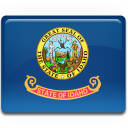
Managing and Paying Claims for Property and Casualty Insurance
Western Guaranty Fund Services (WGFS) is a voluntary, non-profit, unincorporated association formed in 1984 for the purpose of managing and paying claims for property and casualty insurance guaranty associations. WGFS exists to provide management and claims supervisory services to insurance guaranty associations (also known as guaranty funds); to assist guaranty associations in the discharge of their statutory responsibilities; and to promptly and efficiently handle covered claims against insolvent insurers.
In 1984 a group of western United States insurance guaranty associations united with a common goal to form Western Guaranty Fund Services. Their goal was to centralize the management of their property and casualty insurance claims and to serve their administrative needs as economically as possible.
In its history, WGFS has managed over 28,000 property and casualty insurance claims on behalf of its member guaranty associations, paying over $440 million to claimants and policy holders.
We are proud to serve our Guaranty Association Members
Insurance Guaranty Associations
Most Americans who deposit money in a commercial bank or savings bank, know that if the bank runs into financial difficulty, they will not lose that money. Thanks to the Federal Deposit Insurance Corporation, a government agency, individual accounts up to $250,000 are protected.
Are there similar protections for people who purchase insurance? Are they safeguarded if something happens to their insurance company? Will their claims be paid? The answer is yes. The vehicle for this consumer protection is the PROPERTY and CAUSUALTY INSURANCE GUARANTY ASSOCIATION.
Despite careful oversight by state regulators, financially troubled insurance companies can become insolvent. State insurance departments monitor the financial condition of all insurance companies. If an insurance company appears to be in poor financial health, regulators are empowered to take certain steps to strengthen the insurer's position and, if all else fails, to ask the courts to declare the insurer insolvent and to order the liquidation of the insurance company.
Once a court has found an insurance company insolvent, and ordered it liquidated, a liquidator is appointed who begins an arduous task to identify assets, collect premiums, notify all parties who may potentially have a claim, and to turn covered claims over to the insurance guaranty association who will handle them to conclusion.
In the late 1960's, following several insolvencies, the first property and casualty (P&C) insurance guaranty associations were established. In 1970, the National Association of Insurance Commissioners (NAIC) representing state insurance regulators, proposed its model law.
Under the model law, a not-for-profit, property and casualty insurance guaranty association is established by each state. All property and casualty insurance companies licensed in the state, writing specified lines of insurance to be covered by the association, are required to be members.
This concept was gradually adopted by all states, the District of Columbia, and Puerto Rico. The associations had established procedures under which solvent property and casualty insurance companies contribute to absorbing covered losses of claimants against insolvent insurers.
Funds for the payment of claims and the expenses of the insurance guaranty association are derived primarily from assessments against licensed property and casualty insurance companies, writing specified lines of insurance, and from the assets of the estate of the insolvent insurer.
The insurance guaranty associations are obligated to pay covered claims of insolvent property and casualty insurance companies that existed prior to the determination of insolvency and typically those arising within 30 days from the date of the liquidation order.
Once claims are received, the insurance guaranty association assumes the day to day handling of the claims and, as seamlessly as possibly, handles all claims to their conclusion.
Under the state insurance guaranty association system, the property and casualty insurance industry has accepted a unique obligation to protect the public from insurer insolvency and has done this very well.






